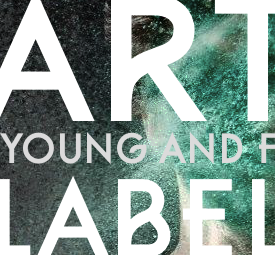


Nowadays it is pretty hard to find someone as modern as the dandy. A figure that fluctuates between Narcissus’ simple vanity and the complex construction of personality, understood as fate, of the mortal who observes life and chooses to turn himself into a work of art.
Is it, indeed, about clothes; about the gowns and apparels one dresses up in, but it is also about a revolutionary and pagan moral centred in the search and construction of the self. Standing in front of a mirror, the dandy uncovers that there is no God. The dandy is his own creator. His salvation, the recognition of the others; the faces of people, mesmerized as he walks by, the instant revelation of the unbeatable tone and indisputable elegance of an aesthetic proposition that beats the fabrics and finally reveals to us a fascinating being.
The concept of dandy that has reached the present day is a blurred memory of that figure. The image of a well-dressed gentleman, and little more. In any way, a well-dressed gentleman with retro clothes that recall the British aristocrat of the 19th century. This is a slightly oblique perception of the dandy of course. Finding the missing pieces in his description is hard because sometimes those pieces are as intangible as the charm or confidence that he oozes simply living. A dandy has to be full of himself. A dandy is blessed with those virtues; those manners that they will never find in those stores and shops where they buy socks like this, handkerchiefs like that.
Elegance is basic for the dandy. Without distinction there is no dandy. However, elegance, the definition of elegance and the standard of what is beautiful is something changeable, and ever since the figure of the dandy appeared in England at the end of the 18th century, that standard has been changing and adapting to the times. The clothes are also full of symbolism. To Baudelaire – who was a dandy is his bohemian way – the excessive delight in clothes and material elegance of the dandy was nothing more than the symbol of the aristocratic superiority of his mind. A century and a half later, in the same England where the original dandy Beau Brummel turned up, the elegance of the made-to-measure suit was used as a symbol of dignity on the shoulders of the young working class of the post-war period: a graceful life in difficult circumstances, as would say the famous mod Pete Meaden. In the same way, all the social groups from urban areas of the 20th century distinguish themselves through dress codes.
Whether it be with cravats at the neck or turn-up jeans, a dandy must cherish other virtues just as irrefutable as the control of his temperament, the composure, and an eloquent, almost funny expression but always carefree, away from romantic feeling and passion. The dandy is also a selfish and capricious being, who considers, as Oscar Wilde said in An Ideal Husband, everyone else rather awful, up to the point of believing the only idea of a possible society is oneself. Eccentricity is something frequently associated with the dandy, whose staging usually borders on the excessive. However, the dandy always gives the impression of controlling that excess, and not the other way around. We could now mention celebrities such as Andy Warhol, Salvador Dalí and maybe Tom Wolf so you can have an idea of that control of eccentricity and the game, the attractive personality and that striking aspect of a person who is convinced that the only cult worth surrendering to is the one for oneself.
To finish, remember you do not need to buy square suits at the closest Burberry’s to become a dandy, nor wear pocket watches or suddenly take an excessive interest in duck hunting. Do not forget the dandy recognizes himself, but it is not him who proclaims himself as such. Finally, and seriously, never forget there is no greater insult to the dignity of a human being than the tracksuit. Tracksuits and half beards. Today’s world does not need dandies, but it does need a little bit more respect for oneself.
Some Good Dandies
Beau Brummel (King George IV’s assistant. London, 1778- Caen, 1840). The first dandy went to Eton and Oxford before joining the 10th division of hussars as a bugler at only 16. After his military career, he got in the good graces of the Prince Regent. Brummel changed men’s fashion of the court, and became a distinguished figure of London’s high society. However, he ended up losing the support of aristocracy and his economic squandering took its toll – Brummel, unlike his friends, came from middle class – and had to emigrate to France to avoid prison. He died ruined of syphilis.
Charles Baudelaire (Poet. Paris, 1821- 1867). The drug addict and bohemian dandy. His main work The Flowers of Evil (1857), where he explores decadence but also eroticism, is considered as one of the first avant-garde books of the 19th century because of the influence it had on the symbolic and modernist movements. Besides being a poet, Baudelaire was also a critic and an essayist, theorist of dandyism, and an active person in the French cultural life of his time. Financial difficulties and diseases, combined with his passion for laudanum, opium and alcohol finished him; he died ruined after spending the last two years of his life semi-paralyzed in several clinics.
Oscar Wilde (Playwright. Dublin, 1854- Paris, 1900). More commonly known for the only novel he ever wrote The Picture of Dorian Gray (1890), Wilde studied in the Trinity College of Dublin and in Oxford before making his way into the British literary society of the end of the 19th century. He worked as a journalist and in his work there is poetry, essays and stories, besides plays and novels. After falling out with the Marquis of Queensberry and after a long series of trials, Wilde ended up in prison (where he spent his time reading and writing), and when he got out, he left England and went into exile in Berneval-le-Grand, a community of French Normandy, before dying 3 years later of cerebral meningitis.
Gabrielle D’Annuzio (Writer and politician. Pescara, 1863 – Gardone Riviera 1938). This Italian novelist, poet, playwright, public speaker and politician was a bald dandy with a big mustache, who enlisted as a volunteer war pilot during World War I, in which he lost an eye. After the war, his nationalist feeling increased and he tried to reconquer by himself (him and a few squadrons that followed him) the city of Fiume (now Rijeka in Croatia). He declared himself ‘Duce’, and applauded the invasion of Ethiopia. Admired by some avant-garde movements, his work was always associated with the later rise of fascism. He died in 1938 of a heart attack.
Paul Weller (Musician. Woking, 1958). The leader of The Jam and The Style Council, and later a soloist, he was in his youth (and according to some still is) an Adonis that always stood out because of his energy and passion for pop and soul music, and of course, clothes. The suits and gowns inspired by mod. For that reason, the second wave of British mods described him as modfather (although the mod movement was born a decade and a half before), and the truth is Weller is a trendsetter and a dandy. At the end of the 80′s, he was a member of Red Wedge, a group of artists who wanted to bring the British youth closer to the labour party in order to overthrow Thatcher. At 55 years old, he is still active.
Swenkas (Zulu tribe, South Africa). I have here an odd case of dandyism. It is a South-African tribe that spend their time dressing up neatly and very nicely, and they compete in elegance and choreography contests. Do not think that these men come from a rich part of South Africa, they do not. They are working people with a special admiration and a taste for grace and clothes. They are already called the African dandies. Dressed up that way, the contestants bet their money on a kind of fashion show and dance. If you are interested, there is a documentary by the Dane director Jeppe Ronde called The Swenkas where you can see them in action. Lose yourself to dance.
- Share:
- Tweet
- Share on Tumblr




